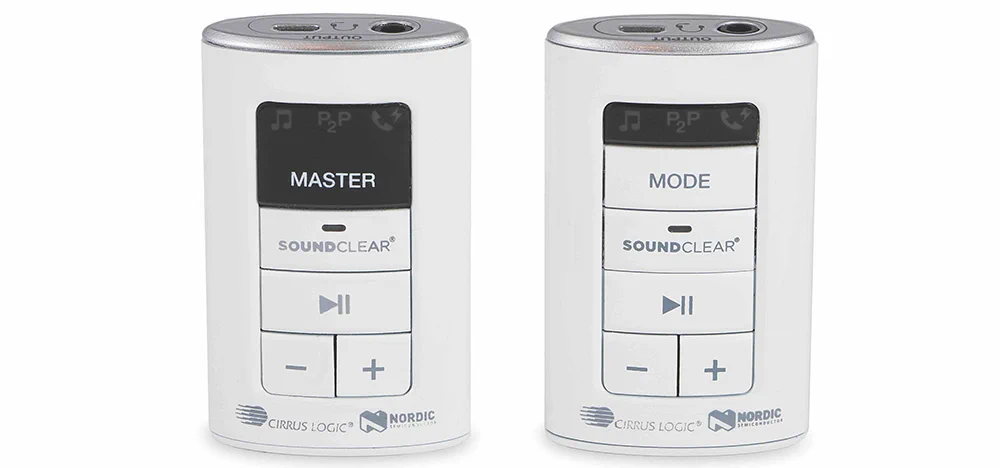LE Audio promises higher quality wireless sound
The Bluetooth SIG’s announcement that a new specification for audio streaming is near brings the next generation of wireless sound a step closer
By Vince Hagen, Business Development Manager, Nordic Semiconductor
It seems that the first person to record sound hadn’t thought about it being played back. According to Time magazine, Édouard-Léon Scott de Martinville intended the tracings he made in the late 1850s—drawn on a lamp blacked cylinder by a stylus moved by a membrane vibrated by sound waves—to be read rather than heard. The idea was that interested parties would decipher the images much as scientists analyse the record of an earthquake on a seismograph. It was only later, with the invention of Thomas Edison’s phonograph—which used a needle to etch a groove which could then be played back by another needle following the groove’s indentations—was recorded sound reproduced.
Grooves, first on wax with mechanical playback and then on vinyl with electrical playback, continued as the mainstay of recorded sound until after the second world war. Then the German invention of magnetic tape was made internationally available and became the preferred media for original recordings. Tape lasted until the mid-70s when the analogue era was brushed aside by digital recording using technology pioneered by Sony.
Today, the benchmark for high-quality digital sound is the CD. CD-quality digital technology samples analogue sound at 44.1 kHz with 16-bit precision (1.41 Mbps), a sampling rate sufficient to capture all the sounds humans are capable of hearing across the 20 kHz bandwidth of the ear. Such a rich stream of data demands a wired circuit to robustly reproduce but wireless tech is catching up. A significant boost to wireless sound will come with the switch from Bluetooth Classic Audio to Bluetooth LE Audio. Early work on a specification was announced by the Bluetooth Special Interest Group (SIG) earlier this year and it’s a change the organisation says will bring higher quality wireless audio and extended battery life from speakers and headphones.
Commercialising wireless audio streaming
The Bluetooth SIG identified audio as a key market for Bluetooth tech virtually from its adoption and soon after Bluetooth 1.0 was ratified in 1999, the first Bluetooth consumer product, a hands-free mobile headset, hit the shelves.
But wirelessly transmitting monoaural voice data is one thing, streaming stereo audio quite another. To boost the wireless link’s throughput and robustness, the Bluetooth SIG later introduced a low-complexity sub-band codec (SBC) to boost audio quality at low-to-medium bit rates. (A codec is an algorithm that compresses digital data to reduce the workload on the wireless link while a companion algorithm decompresses the data at the other end.) The introduction of the MPEG-1 or MPEG-2 Audio Layer 3 (MP3) format helped further improve the reliability of the wireless link because source files are already compressed to some degree before the codec went about its work.
The Bluetooth SIG also introduced additional firmware to customise the Bluetooth protocol for audio applications. The Advanced Audio Distribution Profile (A2DP) facilitates audio streaming between two Bluetooth devices. The door was left open for others by including optional support in A2DP for proprietary codecs such as Advanced Audio Coding (AAC), High-Efficiency AAC (HE-AAC) and Adaptive Transform Acoustic Coding (ATRAC), and manufacturer-defined codecs such as the Qualcomm’s aptX and aptX-HD and Sony’s LDAC.
The advantages of LE Audio
But while today’s sales of wireless headphones are healthy—for example, analyst Statista says 2017 shipments of wireless headphones reached 140 million units—today’s solutions lack high-end audio quality and exhaust batteries quickly. The Bluetooth SIG says that replacing classic Bluetooth with Bluetooth LE will solve both these problems and usher in the next generation of wireless audio.
The latest version of Bluetooth LE, adopted as part of Bluetooth 5.2, brought with it LE Isochronous Communication. Previously, classic Bluetooth was only able to stream audio to a single device such as the left-hand speaker of wireless headphones. Engineers overcame the problem by processing the incoming Bluetooth audio stream in one earbud and then wirelessly retransmitting the second channel to the other earbud. The technique works well but was processor intensive and put a strain on batteries. LE Isochronous Communication solves the problem by making it possible for multiple devices (such as a pair of earbuds) to each receive their own unique audio streaming channel. The channels are “time bounded”, so, for example, the left and right channels retain the original precise musical timing upon replay. The result is stereo sound without the processor overhead and hence extended battery life.
Moreover, while Bluetooth LE offers similar raw data throughput to classic Bluetooth, LE Audio benefits from a new lower bit rate codec that should save battery power while also improving audio quality. Engineers estimate that batteries powering LE Audio will last at least 40 percent longer compared with classic Bluetooth allowing designers to either extend playback time or shrink earbud size by using smaller batteries but with the same playback time.
Today, LE Audio is still some way from a full specification. The Bluetooth SIG originally hoped that the specification would be released during the first half of 2020. But the world’s attention has been diverted to other challenges since then, so the specification has been delayed and the first commercial silicon adhering to the specification is unlikely to be available before the end of 2020. Commercial headphones and speakers will then follow during 2021.

Nordic’s LE Audio solution is designed to support the new LE Audio specifications expected to be released by the Bluetooth SIG during H1 2020
Before then, developers can gain familiarity with the technology by experimenting with Nordic’s LE Audio Evaluation Platform. The evaluation platform allows developers to start assessing the fledgling technology for next generation wireless speakers, over- the-ear headphones and ‘true’ wireless earbuds. Knowledge gained will accelerate the design of prototypes when the specification is finally adopted.